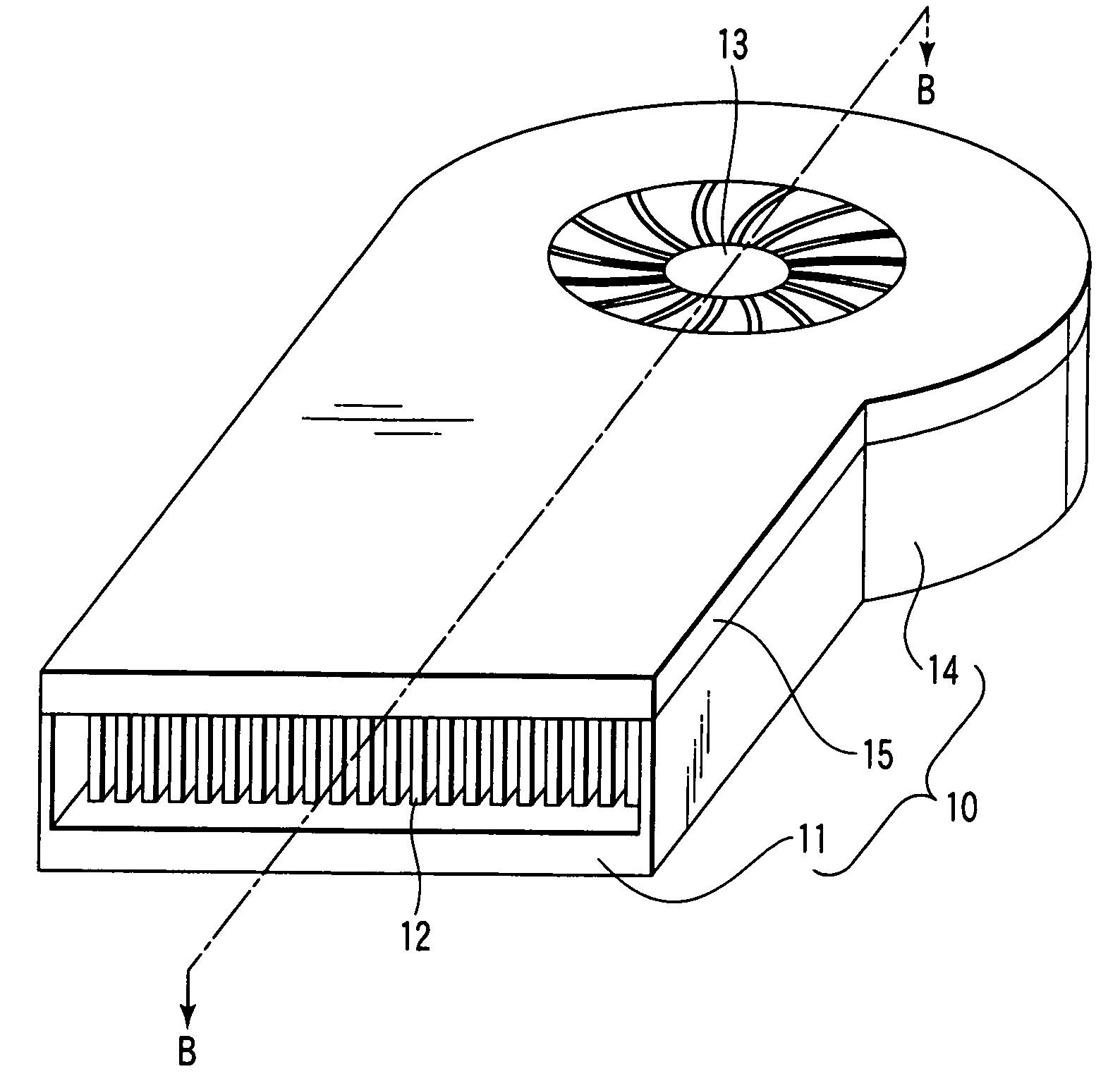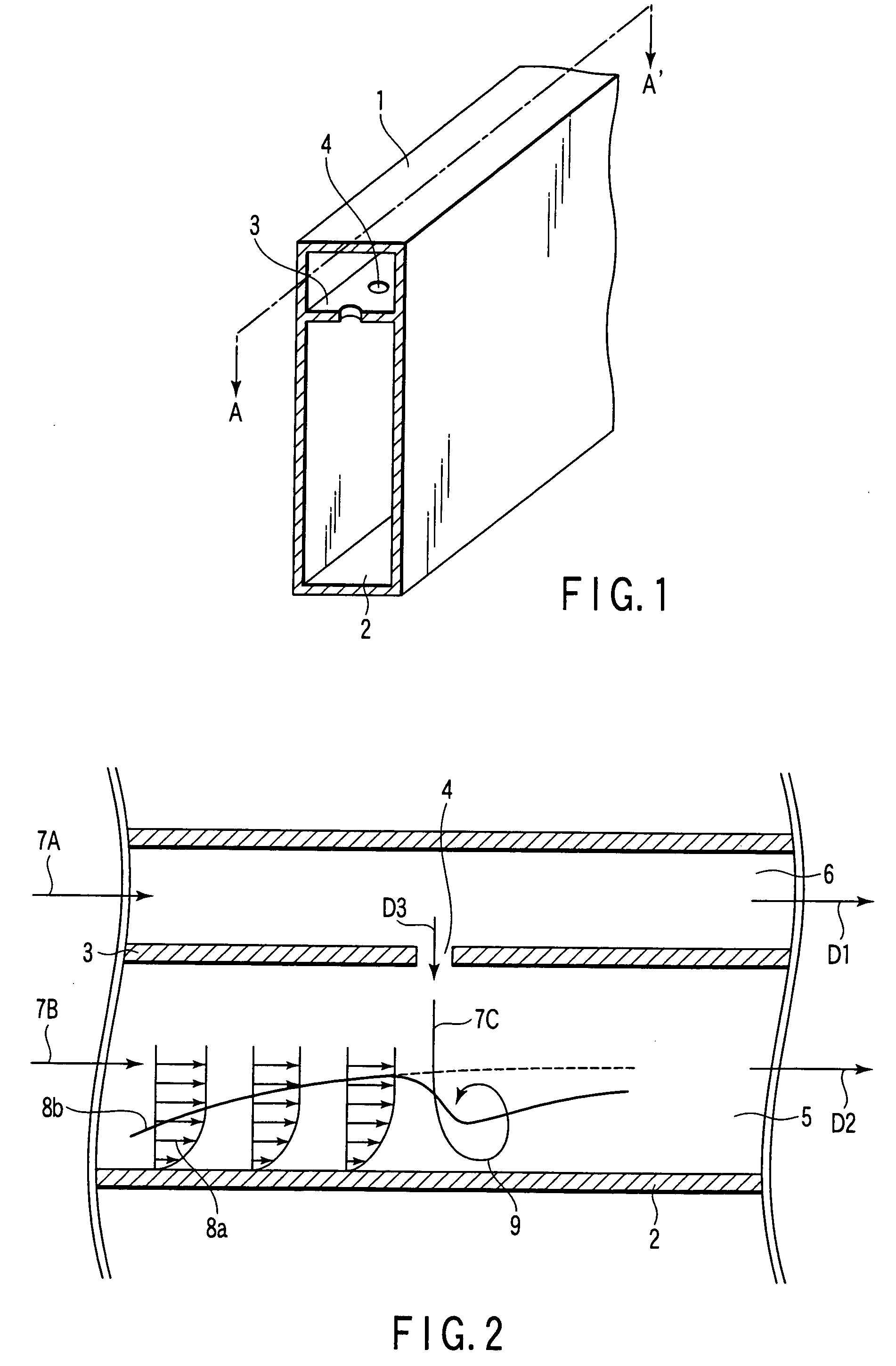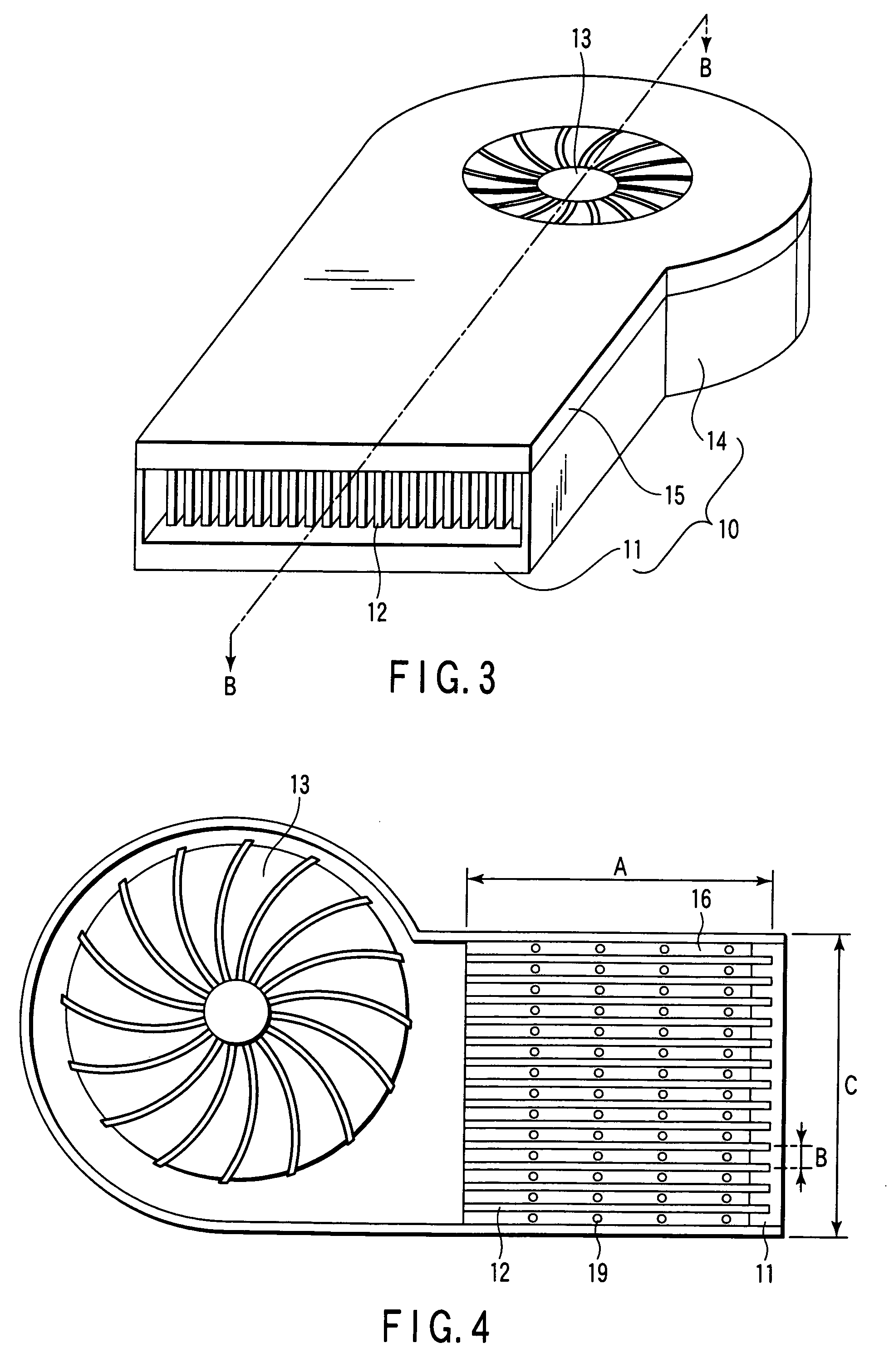Heat dissipating apparatus
a heat dissipating apparatus and heat dissipation technology, which is applied in the direction of domestic cooling apparatus, electrical apparatus casing/cabinet/drawer, instruments, etc., can solve the problems of increasing the size of the heat dissipating apparatus, and achieve the effect of reducing the size of the apparatus, reducing noise generation, and improving cooling efficiency
- Summary
- Abstract
- Description
- Claims
- Application Information
AI Technical Summary
Benefits of technology
Problems solved by technology
Method used
Image
Examples
first embodiment
[0041]FIG. 1 is an oblique view schematically showing a configuration of a heat dissipating apparatus according to the present invention, and FIG. 2 is a cross-sectional view schematically showing the configuration of heat dissipating apparatus shown in FIG. 1 and also showing schematically the configuration of the fluid flowing channel included in heat dissipating apparatus.
[0042] A rectangular duct 1 having a rectangular cross section, which constitutes an envelope having an inlet port and an outlet port, is formed of a metal having relatively large heat conductivity such as aluminum or copper. A fluid flowing space within which flows a fluid is formed within the rectangular duct 1. A heat transfer surface 2 corresponding to the bottom surface of the rectangular duct 1 is thermally coupled to the target module to be cooled or thermally in contact with the target module to be cooled (not shown). The heat of the target module to be cooled is transferred through heat transfer surface...
second embodiment
[0047] A heat dissipating apparatus according to the present invention will now be described with reference to FIGS. 3 to 6.
[0048]FIG. 3 is an oblique view schematically showing the outer appearance of heat dissipating apparatus according to the second embodiment of the present invention. FIG. 4 schematically shows the inner structure of heat dissipating apparatus shown in FIG. 3. Further, FIG. 5 is a cross section view along the line B-B shown in FIG. 3. Incidentally, a lid section 15, which is referred to herein later, is omitted from FIG. 4 for clearly showing the inner structure of heat dissipating apparatus.
[0049] In heat dissipating apparatus according to the second embodiment of the present invention, an envelope comprises a flat plate-shaped base section 11, a wall section 14 erected in a direction substantially perpendicular to the base section 11 and extending upward in a manner to surround the outer circumferential surface of the base section 11, and a lid section closin...
third embodiment
[0070] In the present invention, the main fluid stream 7B flowing within the auxiliary flowing channel 18 is divided at the connecting section 33 so as to permit the same amount of fluid to flow into each of the adjacent through-holes 19. In this case, the flow of fluid from the through-hole 19 into the main flowing channel 17 is not affected by the combination of, for example, the distance from the fin 12 and the arrangement of the through-holes 19 so as to suppress the no uniformity in the amount of fluid flowing from the through-hole 19 into the main flowing channel 17 and, thus, the flow of fluid is stabilized. Incidentally, the effect produced by the connecting section 33 can be further increased if the shape of the connecting section 33 is determined in view of the flowing-direction D1, D2 of the fluid, e.g., if the connecting section 33 is shaped arcuate or streamlined so as to permit a smooth flow of fluid.
[0071] Also, in the third embodiment of the present invention, the fi...
PUM
 Login to View More
Login to View More Abstract
Description
Claims
Application Information
 Login to View More
Login to View More - R&D
- Intellectual Property
- Life Sciences
- Materials
- Tech Scout
- Unparalleled Data Quality
- Higher Quality Content
- 60% Fewer Hallucinations
Browse by: Latest US Patents, China's latest patents, Technical Efficacy Thesaurus, Application Domain, Technology Topic, Popular Technical Reports.
© 2025 PatSnap. All rights reserved.Legal|Privacy policy|Modern Slavery Act Transparency Statement|Sitemap|About US| Contact US: help@patsnap.com



